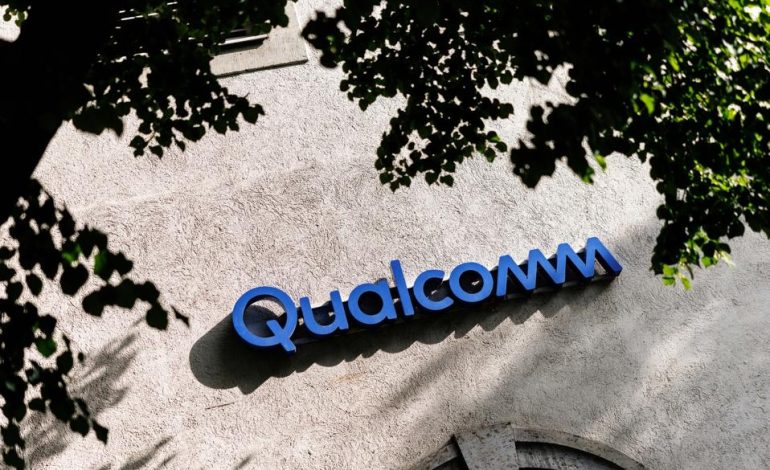Investor’s Business Daily, CNBC, Bloomberg, Axios, Reuters, and Forbes contributed to this report.
Qualcomm just took a hard turn off its smartphone route and into the most crowded lane in tech: AI data centers. On Monday the company said it’s building two dedicated AI accelerator chips, the AI200 coming in 2026 and the AI250 slated for 2027, and Wall Street immediately rewarded the pivot with a 15% pop in the stock. The move puts Qualcomm directly in the crosshairs of Nvidia — still the undisputed king of AI silicon with AMD as the runner-up — as well as the hyperscalers, where Google, Amazon, Microsoft, and OpenAI are all quietly (and not so quietly) rolling their own accelerators.
Qualcomm isn’t tiptoeing in. Instead of only selling chips, it’s packaging them into full, liquid-cooled server racks that draw about 160 kilowatts — the same rack-scale playbook Nvidia and AMD use to knit dozens of accelerators into what functions like one giant computer. The company’s pitch leans heavily on memory: each accelerator card supports up to 768 gigabytes, a capacity Qualcomm argues is exactly what modern, context-hungry models need to run smoothly. The second act, AI250, is where the company is promising fireworks, talking up a new memory architecture that it says will boost bandwidth by more than a factor of ten.
This is all aimed squarely at inference — the part of AI that serves results to users once the big foundational models are trained. Training the largest systems still favors the brawniest GPU clusters and Nvidia’s software gravity, but the day-to-day business of running those models at scale is a different game. Here, the company is selling lower total cost of ownership and better energy efficiency, drawing on the same design instincts that shaped its phone chips. Qualcomm’s data-center accelerators borrow from its Hexagon NPU lineage — the smartphone brain that crunches AI tasks without torching battery life — now blown up for racks instead of pockets.
There’s already a debut customer willing to go big. Humain, a Saudi AI startup, plans to deploy as much as 200 megawatts of Qualcomm-based compute beginning in 2026. Qualcomm also says it won’t force customers to buy the whole stack. Hyperscalers can mix and match racks, cards, and chips, or plug Qualcomm parts into their own designs. In a twist, the company even suggests that rivals could use some Qualcomm components — like its CPUs — in their systems. The point is flexibility: take the full rack or cherry-pick what fits your architecture.
For all the ambition, a few blanks matter. Qualcomm isn’t saying how many chips sit in a rack, what a single chip can actually deliver on standard benchmarks, or what any of this will cost. Those are the numbers cloud buyers will use to size Qualcomm up against Nvidia’s and AMD’s established boxes. There’s also the ecosystem problem. Nvidia doesn’t just sell silicon; it owns mindshare, software tooling, and deployment muscle. If Qualcomm wants to be more than a press-release rival, it has to prove that its compilers, runtimes, and large-scale orchestration can hold up in production.
It’s not a cold start, exactly. Qualcomm has been flirting with the data-center world for years — remember Centriq, the ARM server CPU that launched in 2017 and then quietly exited? — and it shipped an AI100 accelerator back in 2019. What’s different now is the size of the bet and the timing. Demand for AI compute is so outlandish that the industry is effectively capacity-constrained, which gives serious newcomers a shot — especially if they can shave watts per query and dollars per token on the inference side. That’s the wedge Qualcomm is trying to hammer in.
Nvidia’s dominance isn’t going to evaporate overnight, and AMD’s resurgence presents its own headwind, particularly as big AI players like OpenAI signal interest in diversifying their supply. Meanwhile the clouds are hardening around their in-house silicon, which raises the bar for any merchant chip trying to win sockets at scale. But the shape of Qualcomm’s story is coherent: scale up familiar NPU DNA, wrap it in a rack, make memory the star, and promise a cadence that keeps the platform fresh through 2027 and beyond.
The next chapter hinges on proof. Real-world latency and throughput on popular models, reliability at fleet scale, and software that feels familiar to developers who’ve lived inside Nvidia’s universe will determine whether Qualcomm’s splashy debut becomes a recurring headline or just a short-lived stock pop. For now, the company has done the one thing every challenger must: it’s given hyperscalers another credible option — and in the AI era, optionality is its own kind of power.










The latest news in your social feeds
Subscribe to our social media platforms to stay tuned